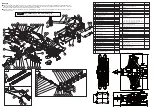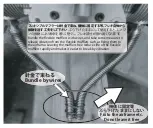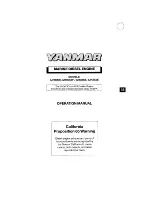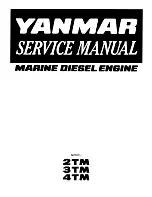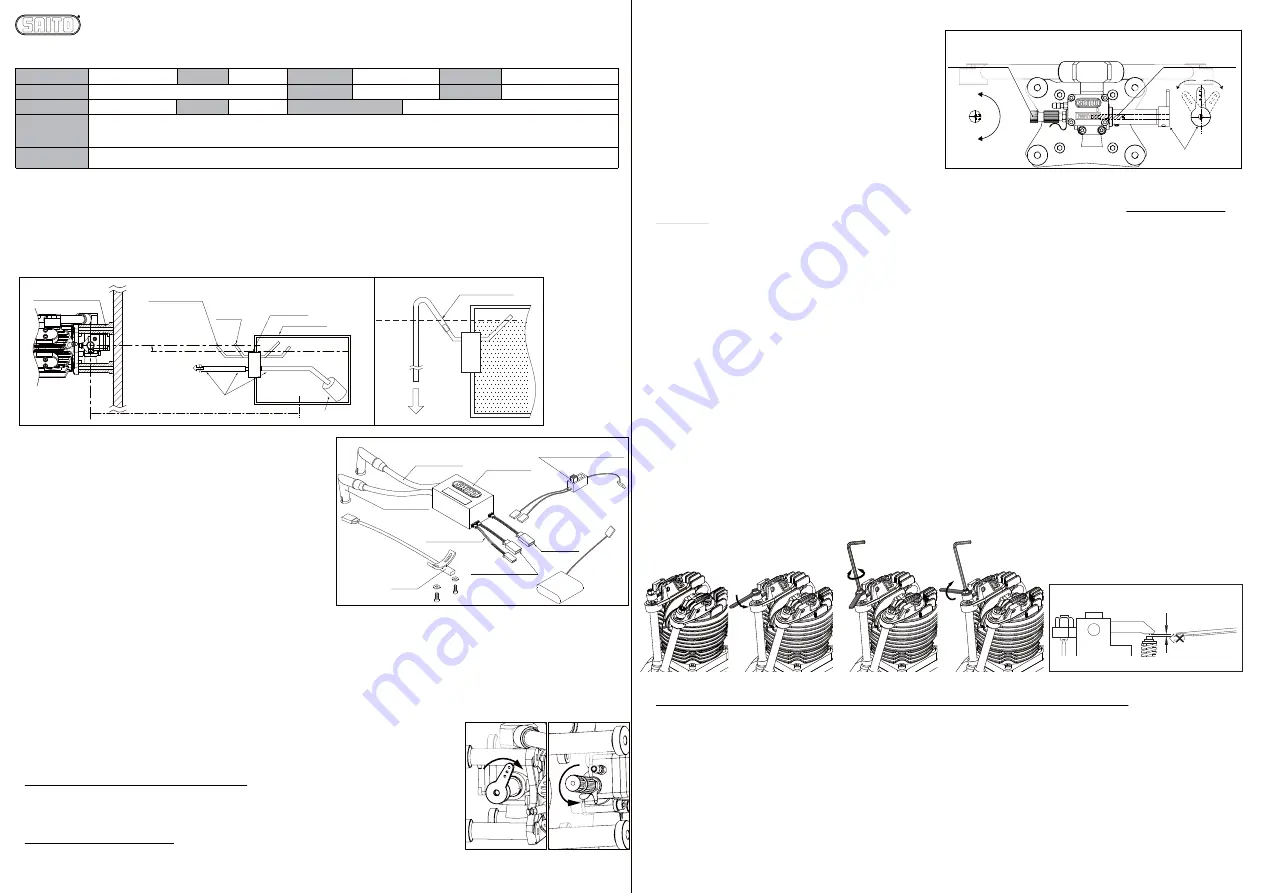
Φ32mm x 2
25.4mm x 2
40.9cc
18”x10”~20”x8”
・Filter with weight [G36-154] ・Durable tube for Gasoline (1m) [G36-155]
・Aluminum spinner nut [120S-30] ・Tappet adjusting kit [30S-161] ・Digital tachometer [G17-167]
Bore
Main body: 1,350g / Muffler: 100g / Ignition: 150g
Stroke
Disp.
Weight (Approx.)
Practical speed
Approx.
1,300-8,000rpm Max on ground
Approx.
6,600-8,000rpm
Propeller
SP-2 or SP-1
Plug
Optional parts
Standard
accessories
Gasoline 30㏄ class
Applications
Battery for ignition system
Voltage:6-12V, greater than 1,000mA ※
・Limit gauge (0.1t) for tappet adjustment
1pc
・Wrench for tappet adjusting lock nut
1pc
・Hexagonal wrench
1pc
・Spark plug
[SP-2]
(Attached to the engine)
2pcs
・Plug wrench
1pc
・Muffler set
1set
・Ignition system(w/sensor)
1set
・Stand off mount
1set
・Anti-loosening nut
1pc
Specifications
FG-41TS Instruction Manual
1. Fuel
●The fuel is a mixture of commercial regular gasoline and reliable oil for 2-stroke engines.
●[Example of oil recommendation]
・ Klotz KL-200 Original Techniplate ・ Deluxe Materials PowerModel 2T-S ・ENEOS RACING SPEC PRO-2T (SAITO STANDARD) etc.
If such oils are not available in your country, then please ask the official SAITO distributor in your country for an alternative.
●Be sure to use the mixture “gasoline : oil =15~20 : 1” by volume ratio. (Ex. 1000ml of gasoline should be mixed with more than 50ml of oil ).
●In Break-in process,
use 15:1 mixed fuel
to ensure the best lubrication for initial run.
●Any damage caused by the fuel used, in which the oil ratio is lower than 20:1 ratio, is not warranted.
●Do not use gasoline ethanol mixed. It may cause not only power loss but also corrosion inside the engine.
2. Ignition
●Place the main unit as far from other electrical devices as possible.
●Place the two switches of the ignition and the RC receiver as far from
each other as possible.
(1) Plug cord(meshed high tension cord)
2 cords compatible for left/right cylinder. Insert the cap deeply onto the
plug to make sure it will not come off.
(2) Sensor cord
Connect with the cord from the sensor attached to the engine.
(3) Battery cord (black / red cord)
Use a fully charged battery that has adequate spec. (6-12V, more than
1000mA is recommended.). Between the battery and main unit, make
sure to install a heavy duty switch whose capacity is higher than 3A.
(4)Tachometer cord (optional)
Connect the digital tachometer (Option). Otherwise the connector is
normally vacant.
Plug cap
Switch(more than 3A)
Sensor
(2)Sensor cord
(1)Plug cord
Main unit
(3)Battery
cord
(4)Tachometer cord
Recommended battery
Voltage : 6-12V
Capacity : 1,000mA~
ver. June, 2022
4.
Break-in
MOST IMPORTANT!!
●Before starting the engine, inject a suitable amount ( approx. 20〜30cc ) of engine oil into the lubrica-
tion nipple on the crankcase using a syringe or pump while turning the propeller by hand. After that,
plug this nipple. As excess is discharged from the breather nipple, attach a tube to the breather nipple.
●Prop-recommendation : Mejzlik 19”x8”
●Use 15:1 fuel:oil ratio for break-in
●Never make the fuel mixture lean during Break-in.
It could cause seizure even during idling or low
speed running.
●Before starting the engine, open the main needle Approx. 1.5~2 turns open (CCW) from fully closed.
●Start the engine (using a starter is recommended for safety).
●Soon after starting, Continue to turn the main needle CCW to drop RPMs until just before engine stops
keeping the throttle opened fully.
●If opening main needle doesnʼt drop RPM, then open the slow needle too.
●Run in this very rich condition for 1 liter of fuel.
●Now “initial” break-in is done.
3. Propeller
●The Standard prop is Mejzlik 20”x8” which brings approx. 7,000rpm (or Falcon 20”x8” brings approx. 6,600rpm). Larger size or greater pitch
can cause engine broken due to overload.
●According to the plane, use a reliable prop which brings 6,600~8,000rpm max at ground.
●Use a well-balanced one. Never use the propeller that has been scratched or damaged even if slightly.
●As the propeller is compressed slightly, tighten the propeller nut every hour of operation.
Throttle
Full open
CCW to make
rich
Main
Needle
⊖
Slow needle
(Adjust by screw driver)
CW→Lean
CCW→Rich
Slow
High
Throttle lever
CW→Lean
CCW→Rich
Main needle
CW→Lean
CCW→Rich
5. Adjustment of carburetor after initial break-in.
◇Needle reference position (Set after initial break-in)
●Start the engine after adjusting the needle to the following
reference value.
●Main needle:Approx. 1.5-2 turn CCW from fully closed
●Slow needle:Approx. 3.5~4 turns CCW from fully closed (Then
throttle valve should be fully closed)
●Actually, the best position of the needles vary depending on the
prop, temperature, humidity and so on. Please adjust as necessary
after observing the engine performance during flight.
◇Peak adjustment
●After starting the engine, warm up for approx. 30 seconds at low speed.
●Achieve the peak at full throttle.
→Turn the main needle CW gradually to the position where the RPM is greatest (the peak). Continuing to turn the needle CW past the
peak could lead to seizure so turn it slowly and carefully. If the RPM suddenly decreases after passing the peak,
instantly turn the main
needle CCW
to again increase the RPM. Otherwise it could damage the engine seriously.
●Once achieving peak RPM, return the throttle to low speed. Make a note of the position of main needle at the peak at that time.
( How many turns you did CW based on the reference value. )
◇Slow needle Adjustment
●After starting the engine, achieve the peak RPM referring to the procedure above. DO NOT move the main needle from the peak position
at this stage.
●After achieving peak RPM, next is slow needle adjustment. Open the throttle from low RPM to full throttle quickly.
●If the engine hesitates for a moment or stalls before the engine reaches max RPM, Itʼs because the mixture is too lean. Then turn the slow
needle CCW slightly.
●If the engine is slow to reach peak RPM (full throttle set), itʼs because the mixture is too rich. Then turn the slow needle CW slightly.
●Adjust the slow needle as above until the RPM follows the throttle movement smoothly. The important point is to adjust the slow needle
AFTER the main needle has been adjusted to its peak.
●Now break-in at ground level is done. Adjust tappets by the method described later.
◇Pre-flight / Flight adjustment
●When the slow needle adjustment is done, check the response by revving up from low speed to full throttle quickly several times.
●Open the throttle fully and turn the main needle CCW approx. 60〜90 degrees from the peak position. This is to make the fuel mixture
richer in the air where the RPM get higher than on the ground.
●After all adjustments are made, fly your aircraft and fine tune the engine according to the situation. Basically tuning should be done with
the main needle. Readjustment of the slow needle is rarely needed if the first adjustment of the slow needle has been done successfully.
6. Tappet adjustment
The valve clearance should be checked and adjusted after break-in and every time after two hours while the engine is cold. Before adjusting
tappet gaps, tighten the screws around cylinders etc.
1. Remove the spark plug and
rocker arm covers of a cylinder.
Then turn the prop CCW by
hand to place the piston at TDC
of compression stroke.
2. Loosen the lock nut and adjust
the gap by hexagonal wrench
until you get the correct gap
(below pic) for both of intake &
exhaust.
3. Once the gap is set, tighten the lock
nut and attach the plug and covers.
Do the same adjustment for the
another cylinder in order.
4. Turn the prop by hand to check if
the compression is enough. If the
gap is less than 0, the valve is always
opened slightly and will lose
compression. Then adjust again.
Correct Gap
Must not be inserted
Close to “0” as possible
Limit gauge
(0.1mm)
Top Dead Center
(The state both valves are closed)
Loosen the lock nut
Adjust the gap turning
the set screw
Tighten the lock nut
to fix the set screw
Notes:
●
Bundle the flexible mufflers with wires, and take some measure to release vibration from the flexible mufflers
such as fixing them to the
airframe. Leaving the mufflers free reduces life of the flexible mufflers rapidly and makes it easier to break by vibration.
●As it uses oil-mixed fuel, the plane may sometimes get dirty from the exhaust.
●Use a reliable and well-balanced prop. Otherwise it may cause an abnormal vibration and could result in a serious accident.
●
●During operation, all engine screws can loosen due to metal heat expansion. Check and tighten occasionally especially prop nut,
exhaust nuts, and cylinder screws.
●When the exhaust valve gets dull by carbon or sludge especially in cold atmosphere, remove the rocker cover and apply some anti-rust
spray to the exhaust valve to help the valve to move smoothly. Apply lubricant to allow the valve springs return smoothly. You can check it
by your fingers.
●Pay attention to the surroundings so as not to disturb others by noise and exhaust.
●Always keep spectators behind the engine when operating the engine.
●As exhaust smoke is harmful, be careful not to breathe in or otherwise expose yourself to its harmful effects.
●Pay attention not to touch the rotating propeller when starting engine, and move to rear side of the aircraft once the engine is started.
●All responsibilities for the use of the engine, and other obligations and responsibilities based on laws, regulations, etc. are borne by the
purchaser and the user, and SAITO SEISAKUSHO CO., LTD. is exempt from any responsibilities.
※If you use a Li-Po, we recommend the spec less than 2,500mA capacity
and less than 30C discharge rate
Firewall
Stand off mount
Fuel supply to carburetor
Fuel filler line
Vent line
Gasoline-compatible tubing
Set the center of the carb
slightly above the fuel level
Close as possible
Fuel tank
Gasoline-compatible
tank stopper
Filter with weight
Fuel
Level
To Outside of the plane
Vent line


